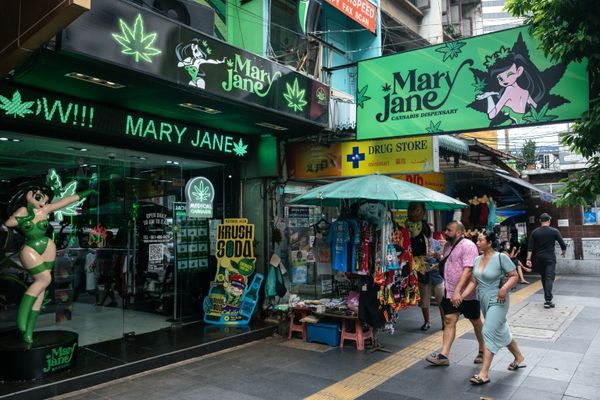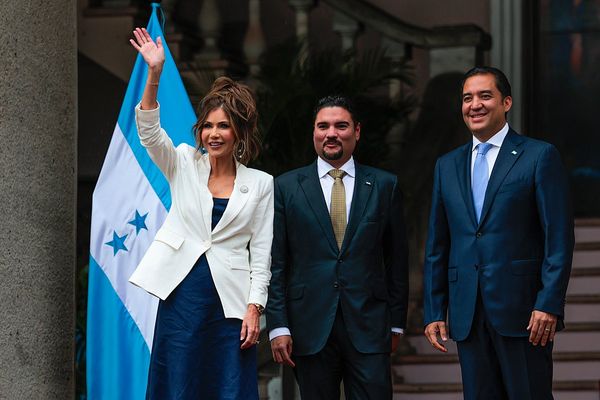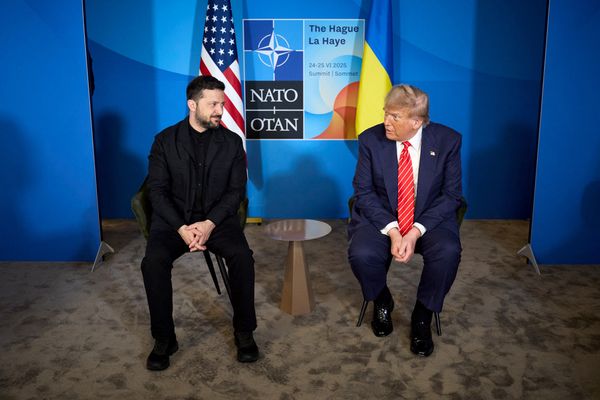
Costume designer Liz Vastola was tasked with designing Matt Murdoch’s black suit for season 3 of Netflix’s Daredevil, as well as Kingpin’s iconic white suit. Liz spoke to me about the challenges of adapting comic book illustrations to screen, and what makes a great superhero costume.
What was the process behind designing Daredevil’s black costume?
I wanted it to feel athletic, but also kind of rough, give more texture to it. Add some dirt, grit, give a more visceral feel, make the mask a little more ragged. Just to feel more violent, in a way.
The rope gloves are a reference to a Muay Thai rope-binding technique. The way we thought about it was in reference to how Daredevil was fighting this season. There was lots of hand-to-hand combat. Bullseye keeps his distance and throws projectiles, while Daredevil gets up close and personal.
Everything about that black costume is meant to be violent and intimidating. And I’m really grateful to the showrunner for showing the audience how that costume came into existence, instead of just … falling from the sky (laughs).

Was it fun to work on a superhero costume?
It was amazing! An honor, really. It’s incredible to see people on social media drawing it and dressing up. But it’s also very risky. Because people really liked the second version of that red suit, they appreciated that there was at least one traditional superhero suit in a Marvel tv series – normally this world is very down-to-earth.
To be the person that has to take the red suit away from him was actually quite daunting. But it was poetic, in a way, because getting rid of that red suit meant discarding everything that came with it.
Matt is trying to shed that version of himself, which of course fits the “rebirth” theme throughout the season.

Which character went through the biggest stylistic change this season?
I think Foggy. And Karen. Of course, Kingpin gets his white suit, which is huge, but it’s not so much out of his realm of style.
As soon as I came on the show I wanted to rework Foggy’s wardrobe. In Daredevil there’s a lot of very serious stuff going on, and I felt like Foggy was a touchstone for the audience, for a bit of levity.
We established a better haircut and gave him some fitted suits, took him to a tailor. I wanted to keep him in a warm color palette, lots of brown and cinnamon. I wanted to elevate him; I found it interesting that the tables had turned with him and Matt, as Foggy is now the guy who is successful and Matt is falling apart.
And with Karen, as soon as I heard she was working as an investigative reporter, I wanted to get her out of a dress and into pants. She’s going to be active, running around the city. I didn’t want her to be inhibited by pencil skirts.
I really wanted to get my hands on those two, particularly, to tweak them, to represent where they’re at this season.
What was it like designing Kingpin’s iconic white suit?
That was incredible. I was pretty honored to be given the keys to that car. And it seems like it would be so simple – it’s just a white suit, right? But it was the most labor-intensive costume we had. It was incredibly tricky to get the color and the texture right.
It’s not typical for a character to wear a bright white suit like that. Cinematographers would normally ask me to bend grey or cream, rather than go bright white. They actually waited to paint a wall on set until we’d settled on the exact shade of white.
And once we had the color, the other colors on set would fall into place. Whenever people were around Kingpin, I’d have to make sure their white shirts would correspond with his color.

Was there a worry that the suit would come across as corny?
Of course! It’s very ballsy to put a white, silk wool suit on a tall guy and call him a scary villain. That’s tough – it would have been so much easier to keep him in black. There was a lot of anxiety over it, because you’ve don’t want to remind people of Scarface or Saturday Night Fever.
But the fitting ended up being the key. The suit had to fit him in a slick, modern way, that didn’t feel like The Godfather. And Vincent had to feel comfortable in it, so he could be intimidating. You’ve got to trust the actor, because that’s who will bring the suit to life, and not have the suit take a life of its own.

So the actors have a lot of influence over the designs?
Absolutely. Especially in television, where you work can work for eight months through one season, it means there’s a constant dialogue. I’m always going back to the actors and checking how they’re feeling in their clothes, if everything feels comfortable and right for their character.
Is it important to be a “people person” in costume design?
It is – the better relationship I have to the actor, and the character, the better connection I have to the clothing. That kind of connection you make with people in the fittings is what’s really going to solidify your relationship, and your ability to do a good job for them.
With costume design, 99% of the time you have to dress people that don’t dress like you. So you have to observe people and try to figure out why they present themselves the way they do, see the choices they make so you can make those choices for them and not have it feel “put on.”

Were there any other subtle details in there that the audience might not notice?
Before Dex becomes Bullseye he has a denim jacket, and there’s one point where he flips his collar up, and we decided in the spur of the moment, to put a bleached white ring, a bullseye, around the inside of his collar.
I also think it’s interesting to see when and where we used red. It’s still Daredevil’s color, even if Bullseye stole it. So we inserted it in Karen or Foggy’s outfit if I wanted to have a feeling of Matt’s presence.
That’s the other cool thing about working on a comic book adaptation – on the page, their use of color is so deliberate, you have to honor that and continue to use it that way on screen.
And I love that. I’m not too excited by the natural, cinema verite look – I like to use costume design in a more poetic way.

Is it difficult to adapt comic book designs to screen?
Yes, it’s really hard to adapt a costume from the pages of a comic. Sometimes you do it in a very literal way, sometimes you’re more interpretative. Personally, I like showing real materials, real construction.
I love superhero costumes that bend toward realism, like you can see what’s holding it together. I really loved in Spider-Man: Homecoming when Peter Parker was running around in that hoodie. I loved that. There was something so indicative about it, the way that kid was coming into his powers. The kind of pajama look – it told me so much about him.
I like when the outfit itself is labor. When it could conceivably be put together, not so much the costume department, but the hero himself. There’s something special about that.
This interview has been edited for length and clarity.







